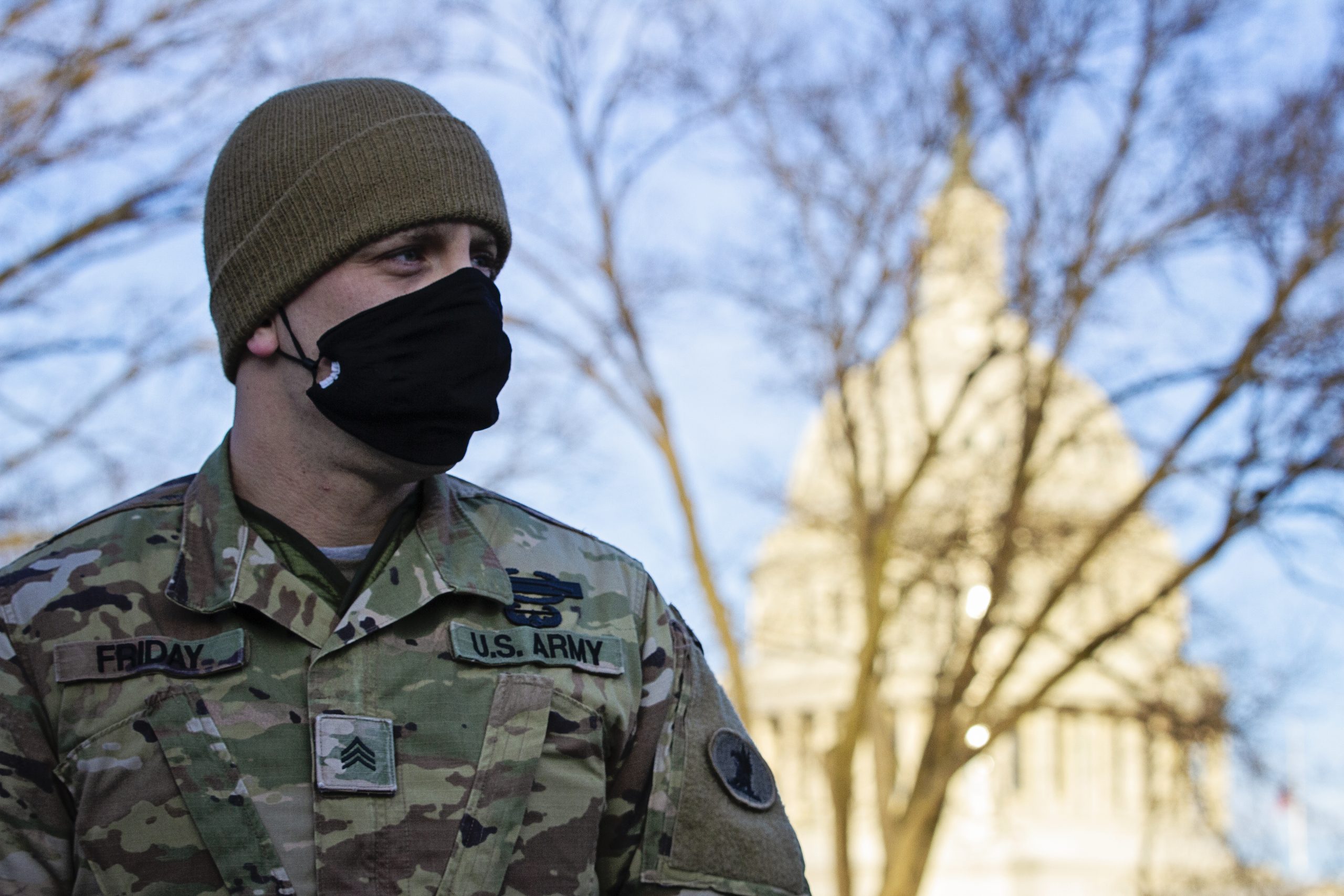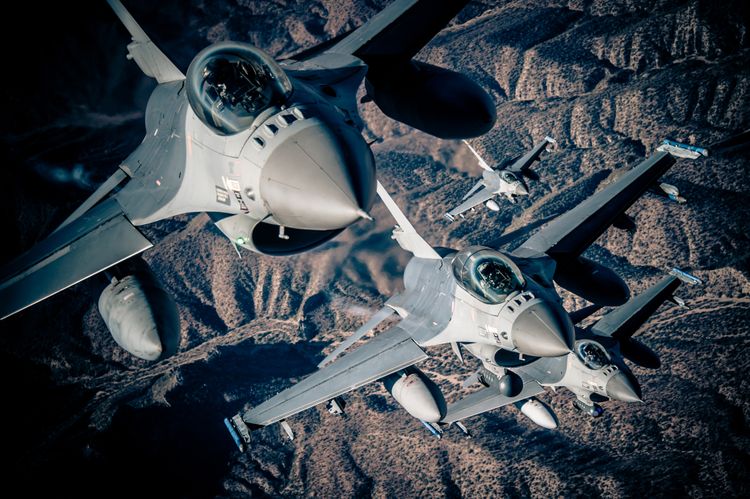Army Secretary Ryan D. McCarthy has authorized Guard troops safeguarding the U.S. Capitol in the wake of its Jan. 6 breach by violent supporters of President Donald J. Trump to carry lethal weapons, the District of Columbia National Guard said in a statement shared with Air Force Magazine.
These personnel were armed as of around 6 p.m. on Jan. 12, in response to a request from “federal authorities” that was given the go-ahead by McCarthy, according to the statement.
“National Guard members are postured to meet the requirements of the supported civil authorities, up to and including protective equipment and being armed if necessary,” the statement said. “The public’s safety is our top priority.”
Earlier in the week, National Guard Bureau Chief Army Gen. Daniel R. Hokanson told reporters Guard troops generally travel with their full array of safety equipment—including their weapons—in case situations on the ground deem it necessary, Air Force Magazine previously reported. However, he noted at the time, decisions about whether troops deployed to the National Capital Region would be asked to carry their weapons were in the hands of “senior leadership,” and those determinations would grow out of conversations between NGB, federal agencies, the Federal Bureau of Investigation, and law enforcement.
It was not immediately clear whether this decision will extend to all Guard personnel who are being mobilized to the National Capital Region in the lead-up to the presidential inauguration—whose numbers may reach 15,000—or if it just applies to those currently safeguarding the U.S. Capitol grounds.
The current deployment marks the first time since the Civil War that Guard troops have taken temporary shelter within the U.S. Capitol, Bloomberg News’ Erik Wasson reported on Twitter.
Congressional reporters from other outlets also posted photos of the unorthodox camping quarters on the social platform.
“Photos have circulated this morning showing National Guard troops resting in the Capitol building,” the DCNG later clarified in a Jan. 13 statement shared with Air Force Magazine. “This area of the Capitol has been designated a rest area for National Guard members when they are on duty but between shifts. To be clear, this [is] not where they are lodging when off duty. Being present is the first step in ensuring the safety of our citizens and our Nation’s Capital. Our security personnel work in shifts and rest when they can as others stand watch.”
The photos have inspired grassroots efforts to gather donations of “comfort items” for troops deployed within the District, but the NGB asked the public to refrain from these well-intended gestures, according to a release.
“While we appreciate the many offers and people who care about our Soldiers and Airmen, we are not logistically able to accept donations of any kind,” NGB wrote.
Editor’s Note: This story was updated on Jan. 13 at 4:16 p.m. EST to include new comment from the DCNG and at 6:37 p.m. with additional information from the National Guard Bureau.









